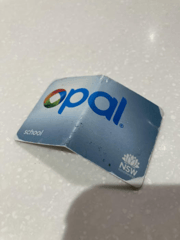Iconic kitchen essential brand faces bankruptcy as financial lid pops off
- Replies 25
In a surprising turn of events, a well-known household brand has found itself in financial turmoil, filing for bankruptcy amid shifting market dynamics.
Once a staple in kitchens across the globe, the company has struggled with declining sales and increasing competition.
This development marks a significant change for a brand that has long been associated with convenience and innovation in food storage.
As the company navigates its financial challenges, the situation raises questions about the future of its iconic products and its place in the evolving consumer landscape.
Tupperware Brands and several of its subsidiaries sought Chapter 11 bankruptcy protection on Tuesday, September 17, succumbing to declining demand for its once-popular food storage containers and escalating financial losses.
‘Over the last several years, the company's financial position has been severely impacted by the challenging macroeconomic environment,’ Chief Executive Officer Laurie Goldman stated in a press release.

The brand faced difficulties, including a drop in sales following a brief surge during the pandemic, when heightened home cooking temporarily boosted demand for its colourful, airtight containers.
This decline was worsened by rising costs for raw materials like plastic resin, as well as increased expenses for labour and shipping.
Tupperware has seen sales decline for six straight quarters since Q3 2021, with persistent inflation dampening the spending of its lower and middle-income customers.
‘As a result, we explored numerous strategic options and determined this is the best path forward,’ Ms Goldman explained.
‘This process is meant to provide us with essential flexibility as we pursue strategic alternatives to support our transformation into a digital-first, technology-led company better positioned to serve our stakeholders.’
In 2023, Tupperware reached a debt restructuring agreement with its lenders and engaged Moelis & Co as an investment bank to explore strategic options.
The company had previously expressed ‘substantial doubt’ about its ability to continue operations due to its financial troubles.
According to Bloomberg, Tupperware is preparing to file for bankruptcy protection after violating its debt terms and consulting legal and financial advisors.
Bankruptcy filings in the US Bankruptcy Court for the District of Delaware revealed the company’s assets are estimated between $500 million and $1 billion, while liabilities range from $1 billion to $10 billion.
The filings also indicated that Tupperware’s creditors numbered between 50,000 and 100,000.
On Tuesday, September 17, the company announced it would seek court approval to remain operational during bankruptcy proceedings and to pursue a sale process to safeguard its brand.
As Tupperware faces a critical financial turning point with its recent bankruptcy filing, the iconic brand's future remains uncertain.
This development echoes broader concerns about the enduring legacy of Tupperware, which has long been a staple in kitchens around the world.
Last year, discussions about the potential decline of this beloved kitchen brand sparked significant conversation, with many reflecting on its storied history and its role in their lives.
As the company navigates this challenging period, it’s clear that the conversation about Tupperware’s place in our homes—and its potential extinction—continues to resonate deeply with consumers.
 We invite you to share your thoughts and memories of Tupperware. Has it been a part of your kitchen for years? How do you feel about the shift towards more sustainable products? Do you believe Tupperware can reinvent itself for the modern consumer? Your insights are valuable, and we'd love to hear your take on this piece of kitchen history facing a crossroads.
We invite you to share your thoughts and memories of Tupperware. Has it been a part of your kitchen for years? How do you feel about the shift towards more sustainable products? Do you believe Tupperware can reinvent itself for the modern consumer? Your insights are valuable, and we'd love to hear your take on this piece of kitchen history facing a crossroads.
Once a staple in kitchens across the globe, the company has struggled with declining sales and increasing competition.
This development marks a significant change for a brand that has long been associated with convenience and innovation in food storage.
As the company navigates its financial challenges, the situation raises questions about the future of its iconic products and its place in the evolving consumer landscape.
Tupperware Brands and several of its subsidiaries sought Chapter 11 bankruptcy protection on Tuesday, September 17, succumbing to declining demand for its once-popular food storage containers and escalating financial losses.
‘Over the last several years, the company's financial position has been severely impacted by the challenging macroeconomic environment,’ Chief Executive Officer Laurie Goldman stated in a press release.

Tupperware Brands has filed for bankruptcy due to financial struggles and falling demand. Credit: Tupperware Australia
The brand faced difficulties, including a drop in sales following a brief surge during the pandemic, when heightened home cooking temporarily boosted demand for its colourful, airtight containers.
This decline was worsened by rising costs for raw materials like plastic resin, as well as increased expenses for labour and shipping.
Tupperware has seen sales decline for six straight quarters since Q3 2021, with persistent inflation dampening the spending of its lower and middle-income customers.
‘As a result, we explored numerous strategic options and determined this is the best path forward,’ Ms Goldman explained.
‘This process is meant to provide us with essential flexibility as we pursue strategic alternatives to support our transformation into a digital-first, technology-led company better positioned to serve our stakeholders.’
In 2023, Tupperware reached a debt restructuring agreement with its lenders and engaged Moelis & Co as an investment bank to explore strategic options.
The company had previously expressed ‘substantial doubt’ about its ability to continue operations due to its financial troubles.
According to Bloomberg, Tupperware is preparing to file for bankruptcy protection after violating its debt terms and consulting legal and financial advisors.
Bankruptcy filings in the US Bankruptcy Court for the District of Delaware revealed the company’s assets are estimated between $500 million and $1 billion, while liabilities range from $1 billion to $10 billion.
The filings also indicated that Tupperware’s creditors numbered between 50,000 and 100,000.
On Tuesday, September 17, the company announced it would seek court approval to remain operational during bankruptcy proceedings and to pursue a sale process to safeguard its brand.
As Tupperware faces a critical financial turning point with its recent bankruptcy filing, the iconic brand's future remains uncertain.
This development echoes broader concerns about the enduring legacy of Tupperware, which has long been a staple in kitchens around the world.
Last year, discussions about the potential decline of this beloved kitchen brand sparked significant conversation, with many reflecting on its storied history and its role in their lives.
As the company navigates this challenging period, it’s clear that the conversation about Tupperware’s place in our homes—and its potential extinction—continues to resonate deeply with consumers.
Key Takeaways
- Tupperware Brands has filed for bankruptcy amid ongoing financial difficulties and decreasing demand.
- The company has witnessed a decline in sales for six consecutive quarters beginning in the third quarter of 2021.
- Tupperware intends to continue business operations while undergoing bankruptcy proceedings.
- The company is planning to seek a sale in order to protect the Tupperware brand and its future.







